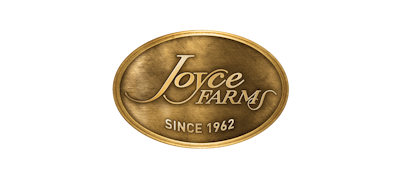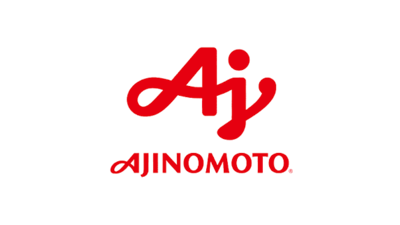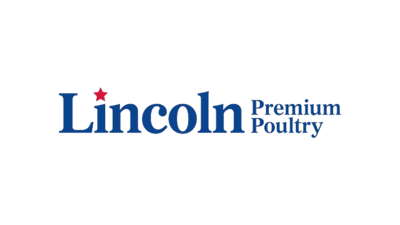The demands for food safety and quality have risen in recent years. Everything from regulatory change to consumers’ evolving expectations for transparency have prompted this shift, and the need for safetyand quality-driven food and beverage operations is stronger than ever. These changes are impacting food companies across the entire industry, and no matter the size or nature of an operation, adapting to the new landscape of food safety is near impossible with traditional, paper-based systems. To that end, companies of all sizes are increasingly turning towards technology to help achieve better visibility into their operations.
While other industries have been quick to leverage big data, food manufacturers and processors have only recently begun to explore the benefits of tools featuring real-time data, alerts, and automated processes to eliminate the paperwork shuffle. But as with any type of change, some executives remain uncertain about the practicality of a technology investment. Certainly, it might suit larger companies, but is it really worthwhile for smaller manufacturers?
The team from Death Wish Coffee, an operation with 32 employees based in Upstate New York, says yes. Join us in this guide to discover how they transformed their processes by utilizing SafetyChain to perform a complete overhaul of data gathering methods. Once a paper-driven operation, their facilities now rely on real-time data to achieve ongoing visibility into key metrics such as waste and scrap. With a firsthand account from CJ De Luca, Quality Assurance Manager for Death Wish Coffee, we’ll reveal how this rapidly growing coffee company achieved a successful implementation, including the following key insights:
- Death Wish’s most pressing existing challenges
- Project considerations that were addressed to ensure success
- The key success factors that prompted an effective implementation
- Benefits Death Wish realized after partnering with SafetyChain
We’ll begin with a brief look into Death Wish’s operations to help frame our customer success story.
About Death Wish Coffee
Since its inception in 2012, Death Wish Coffee experienced explosive growth. Online orders trickled in slowly at first, but gained momentum and ultimately led them to become the top seller of fair-trade, organic, high-caffeine blends. Hailed as the makers of the “world’s strongest coffee,” Death Wish has now expanded its product line to big box retailers like Wal Mart, as well as grocery stores across the U.S. They sell millions of pounds of coffee each year.
Despite their massive growth, the Death Wish operates successfully with just over 30 full-time staff members. Their food safety and quality assurance (FSQA) team is thus small, and no one on the team had any experience with the Safe Quality Food (SQF) Program. They relied on paper-driven processes to track food safety and quality data among other key metrics, but knew that a technology investment could help them save time while implementing an effective SQF program across their three facilities. These drivers led them to SafetyChain’s Food Safety and Quality Assurance solutions. In the next section, we’ll dive deeper into the challenges the company sought to solve with technology.
What Problems Did Death Wish Coffee Want to Solve with Technology?
From larger, multinational companies to smaller enterprises, all food and beverage facilities face similar FSQA challenges. For Death Wish, one major challenge was the burden of tedious, paper-based processes. While they already recognized a need for better recordkeeping, they also knew that SQF would only increase the amount of paperwork they’d need to process.
When the COVID-19 pandemic hit, sales hit an all-time high and there was added pressure to keep up with high demand, as at-home coffee consumption reached a record of 85% of coffee drinkers having a cup of coffee at home. They needed to be able to increase production without compromising quality.
Ultimately, their team sought a way to get ahead of the paperwork instead of getting buried by it. From incorrect, incomplete, or backlogged reports to weeks’ and months’ worth of binders, De Luca was keenly aware of the risks that came with delaying a technology investment. Thus, Death Wish sought to reduce the amount of manual paper processing they’d need to do, with the end goal of centralizing document storage which would also help with audits.
With these objectives in mind, they knew their culture would have to change as well. Recordkeeping had been a tedious process which could leave operators bogged down, but De Luca knew he could get his team excited about recordkeeping by introducing SafetyChain. No one likes doing paperwork, after all, but most of us are familiar and even comfortable with screens.
Moreover, in addition to leveraging technology to generate excitement among his staff, De Luca also sought to build a culture of accountability with SafetyChain. The solutions would allow him to oversee the completion of checklists. Should any reports go unfinished, he could pinpoint the source of the issue promptly. This, he knew, would allow operators to take ownership of their process while also expanding his outreach further into the production floor.
What Internal Considerations and Challenges Did Death Wish Have to Address?
Like any company, Death Wish also had some internal factors to consider before pursuing a technology project. These included:
- Budget and financial considerations: Of course, budget is always a factor when bringing in new technology. There are always competing budget demands for machinery and other types of equipment, among other operating costs. Death Wish therefore needed to make a compelling business case for the investment. They did so by evaluating the cost of the system versus the cost of not having it in place. After exploring a few ways SafetyChain could help them improve, including minimizing the risk of noncompliance, it was easy for them to see the value and ROI. Without SafetyChain, losing SQF certification could have serious implications, including ultimately losing out on access to key retailers, revenue loss, and potential loss of jobs.
- Convincing upper management: Fortunately for Death Wish, the company is still young and its employees, including upper management, are open to change. One of the most compelling arguments in favor of technology was that most employees were already used to using screens, so it made sense to transition their food safety activities to phones and tablets. This would allow operators to have GMPs and PMs right in front of them, with a fresh checklist available every day. Plus, Death Wish staff already used their phones to clock in and out.
- Multiple facilities: Death Wish is spread across three facilities, but information between these locations was often siloed. They knew they could benefit from real-time data access across all facilities, and that having this information would help them manage operations more effectively.
- Cultural change: Any new technology requires a cultural shift. De Luca knew a change in habits and culture would be necessary for a successful implementation. Yet, instead of approaching it as a challenge, he viewed it as a way to help get his staff become more engaged in their daily routines.
In addressing to confronting these challenges head-on, there were a few other factors behind Death Wish’s success with SafetyChain. Let’s take a look at what those entailed.
What Were the Biggest Drivers of Success in Implementation?
As mentioned in the previous section, Death Wish employees’ eagerness to embrace a technological transformation played an integral role in the project’s success. Yet, some other important pieces of the puzzle helped to pave the way for a smooth execution.
Here are a few things Death Wish did to support a successful project outcome:
- Established a comprehensive rollout and training plan
- Prior to introducing SafetyChain, De Luca began preparing his teams roughly two months in advance. He was fully transparent in explaining the shift that would take place and how it would affect workflows.
- Generated enthusiasm among their teams
- De Luca highlighted the ways in which SafetyChain’s solutions would help teams become more efficient in their roles to generate excitement among the staff.
- Chose software that was easy to use
- While it helped that Death Wish employees were fairly tech-savvy to begin with, SafetyChain systems are known for their ease of use. The implementation time was short, with the process of building forms lasting just a few weeks. It was also easy for the Death Wish team to learn the back end of the system.
- Benefited from the helpfulness and guidance of SafetyChain staff
- While employees created some basic forms on their own, Death Wish leveraged SafetyChain’s expertise thereafter and allowed us to take ownership of many key pieces through the remainder of the project.
- Used SafetyChain’s training environment for one week
- De Luca was clear with the transition timeline and ensured that middle- and upper-management was open to receiving feedback. They invited operators to bring any questions or concerns to them during the trial period, which were addressed promptly. Operators were also invited to make suggestions for improvements or additions as needed.
- Set up a training class
- With familiarity on how to use their new SafetyChain solutions, employees found it simple to incorporate the new approach into their daily routine.
- Standardized wherever possible
- As they prepared for implementation, staff noticed that they had many forms that captured the same data. To minimize redundancies, they standardized before building forms in the SafetyChain module.
- Invested in tablets and connected to Wi-Fi
- While SafetyChain is one of the few food safety software options that can be used in offline mode, having connected facilities gives executives better real-time insight into their plants’ operations. De Luca’s advice to other companies is to resist the urge to underspend in this area.
Now that Death Wish has been using SafetyChain on a daily basis, let’s see some of the ways they’ve benefited from our solutions.
What Benefits Has SafetyChain Created for Death Wish Coffee?
Death Wish employees are still discovering more and more ways to use SafetyChain to their advantage throughout their facilities. Here are some of the most noteworthy benefits they’ve witnessed so far:
- Time savings: Staff is now able to reallocate several hours per week from data entry to more important tasks. Many team members wear multiple hats, and they are now better able to give the projects and coworkers the attention needed to focus on more strategic business projects
- Waste tracking: SafetyChain enforces consistent recordkeeping practices. While tracking daily waste might have been a remote possibility before, it would have been tedious and time-consuming with paper-based systems. Now, it’s easy to capture daily waste and analyze historical data. As a result, waste reduction has become a fun way to motivate and instill healthy competition among employees. Waste has decreased from 500 to 120 bag prints per day since SafetyChain was rolled out.
- Accurate recordkeeping: De Luca no longer has to attempt to decipher different handwriting, since records are now digitized.
- Ability to perform corrective actions: Recently, Death Wish used SafetyChain’s solutions to quickly pinpoint an issue with one of their cooling tray roasters. They were able to call in a welder before the issue spread further.
- Accountability for operators: Real-time data enforces accountability by giving upper management enhanced visibility into line operations.
- Ability to get into larger retailers: Death Wish has always wanted to grow, but they didn’t want to do so while sacrificing quality. The ability to document SQF programs with SafetyChain software has allowed them to scale their business while delivering quality products, so they are now found in major retailers like Wal Mart. With equipment upgrades, Death Wish scaled their operation to produce three times as much product in the same amount of time.
- Improved tracking and product quality: In addition to tracking yield/waste, roast shade, and sensory evaluations, Death Wish Coffee began tracking water activity, leak detection, oxygen levels, total dissolved solids, and particle analysis to improve product quality.
- Employee empowerment and strong safety culture: The employees of Death Wish Coffee share a common passion for compliance, safety, and quality. They meet regularly and welcome input from the floor, management, and beyond, to ensure they continue to meet and exceed expectations so they can continue to grow and prosper.
Summary
Since Death Wish Coffee went paperless with SafetyChain, they’ve been able to eliminate guesswork. Now, the data tells the story. With a 99% compliance rate, their company is performing better than ever, and they’ll continue to leverage data to pursue ongoing improvement.
To review some of the key learnings discussed herein, let’s reflect on the key ways Death Wish has been able to improve since implementing technology:
- Productivity: Where there were once gaps in their data, Death Wish now has thorough recordkeeping with quick, easy access to all of their data. This will help them navigate audit readiness and preparation, and they can also benefit from fast, simple report creation. Additionally, with an enhanced level of accountability, all employees can take greater ownership over their contributions.
- Compliance: SQF compliance was a major driving force behind the Death Wish team’s decision to go paperless. Doing so has helped them perform proactive maintenance checks and detect issues earlier, while providing immediate visibility into HACCP checks.
- Profitability: Now, De Luca and fellow management staff can access real-time insights into operations across all facilities. They’re reaping the benefits of analytics and data mining to discover patterns and perform comparisons, which has helped them secure contracts with large retailers.
Ultimately, while any technology project will require some careful consideration and planning, it’s a worthwhile endeavor for every company—no manufacturer is ever too small to be safe. And, as we’ve seen with Death Wish Coffee, choosing to implement technology to pursue ambitious safety and quality goals can be the very decision that winds up helping your company grow.


